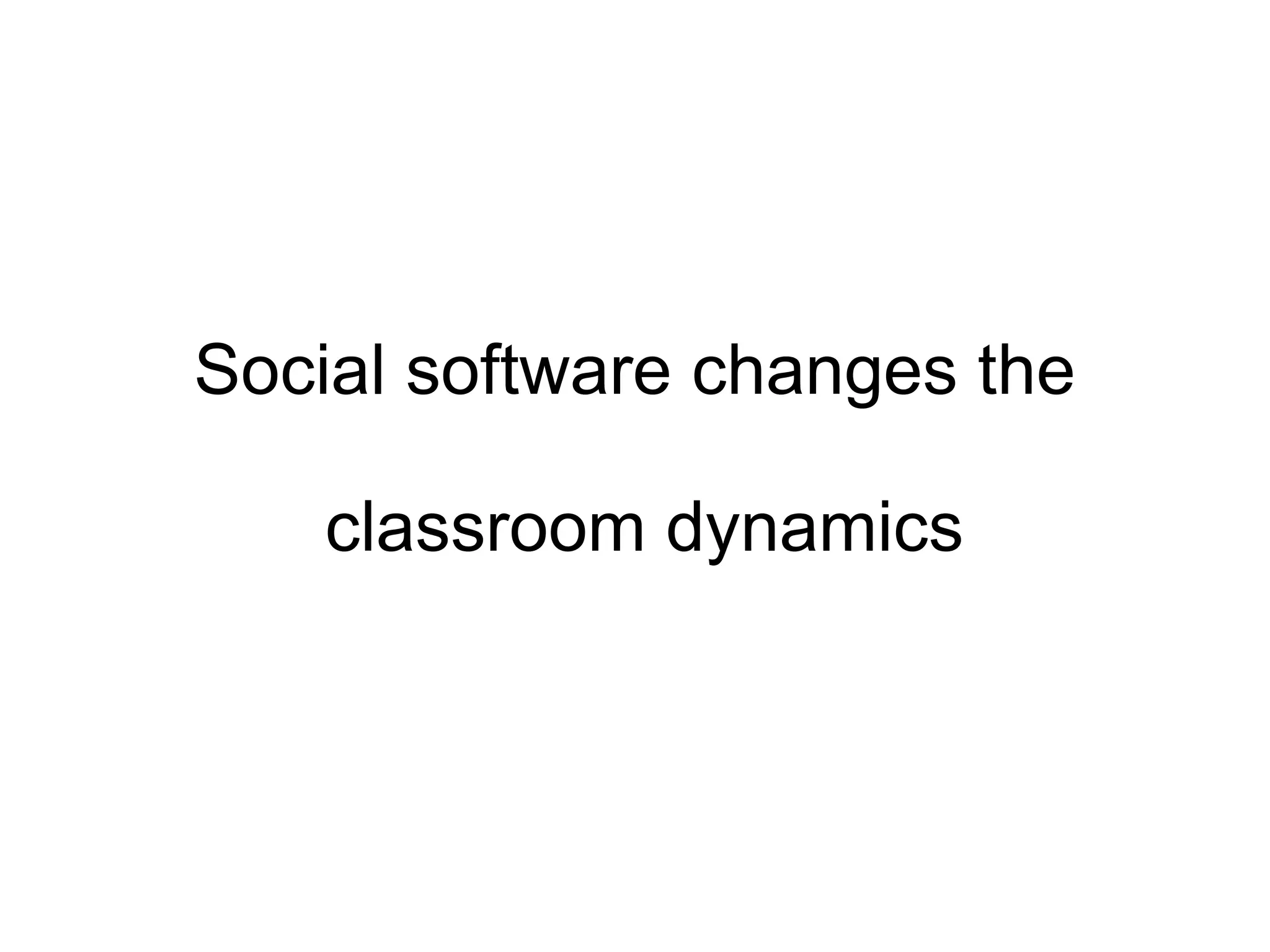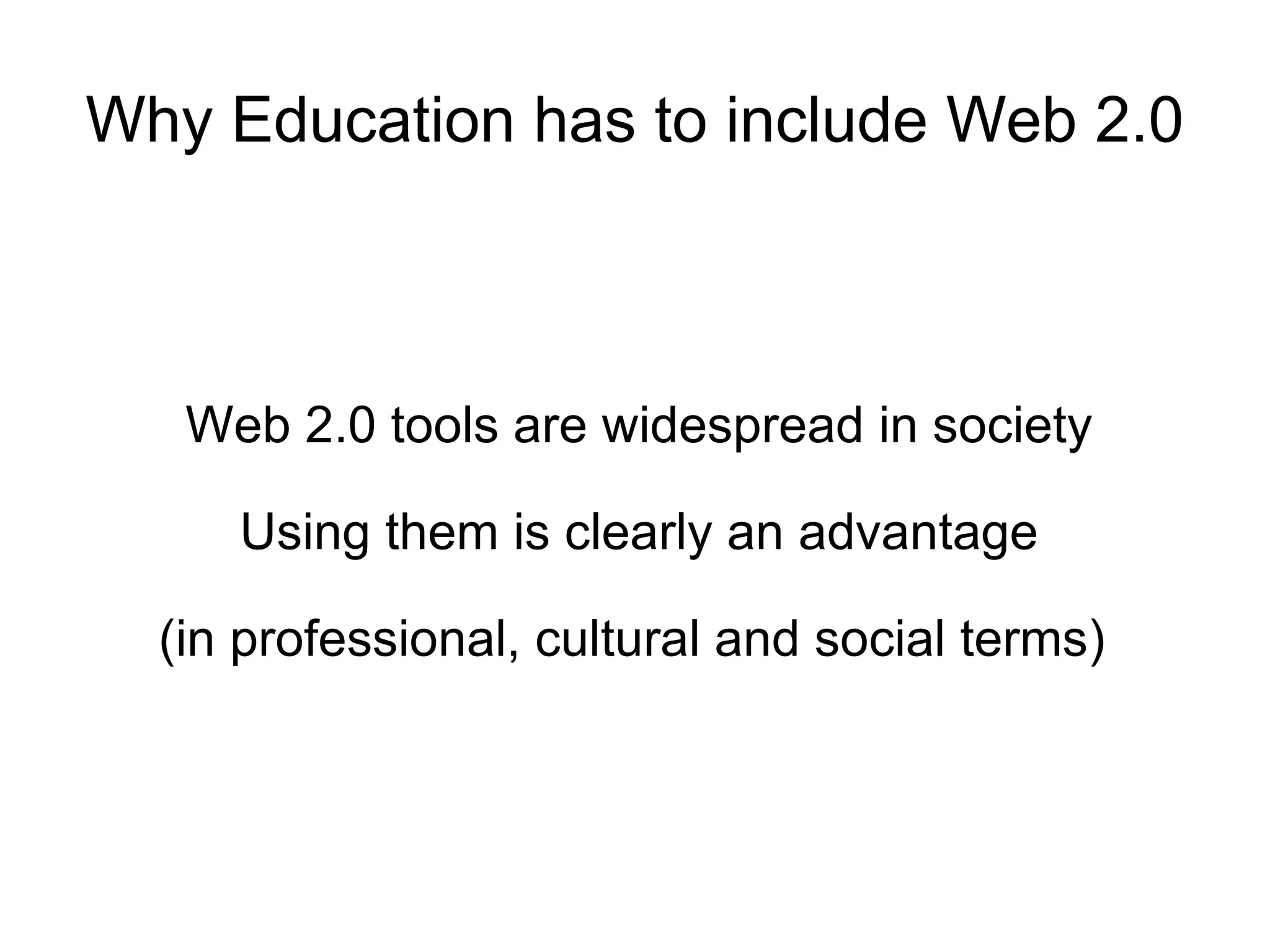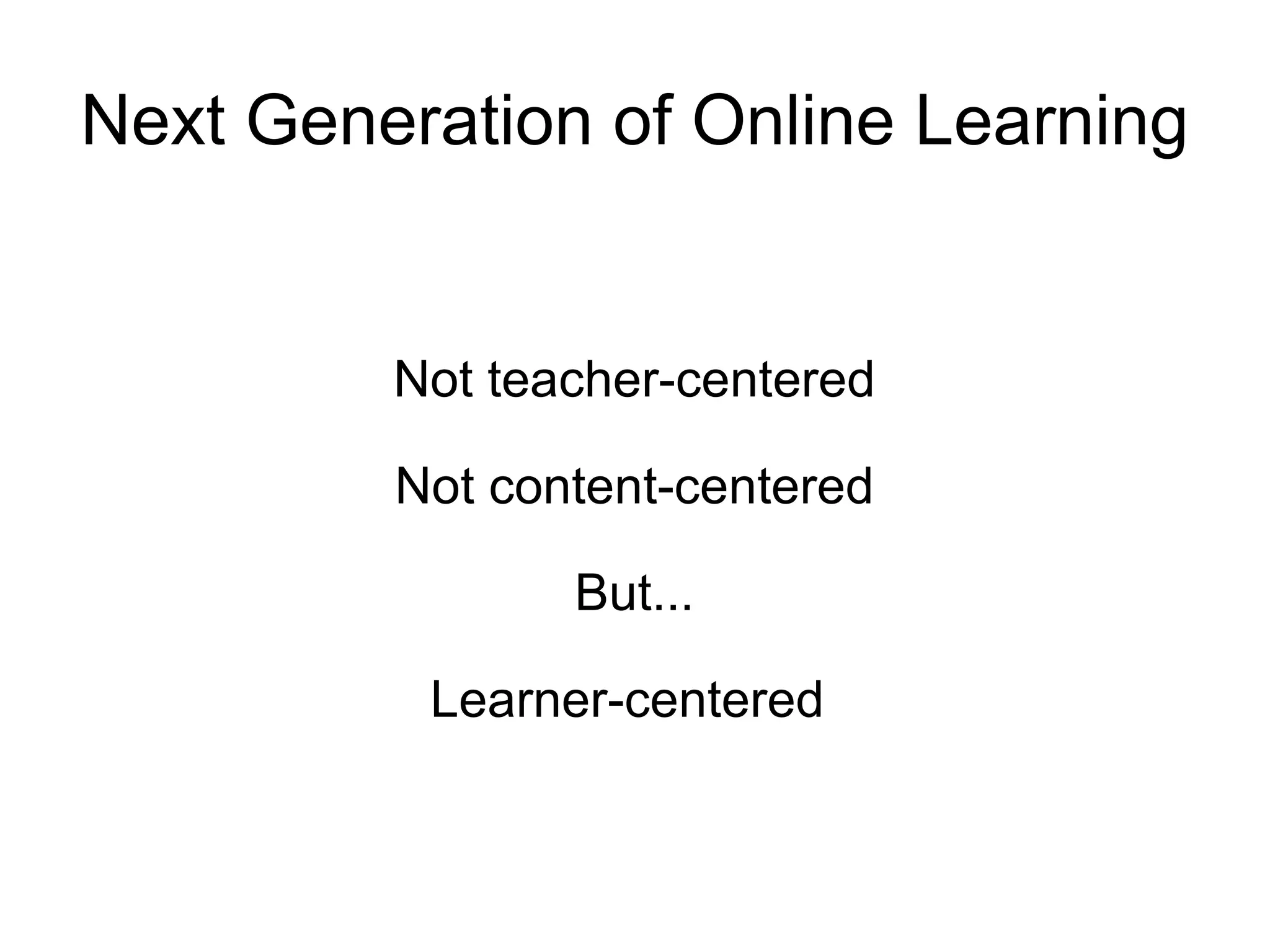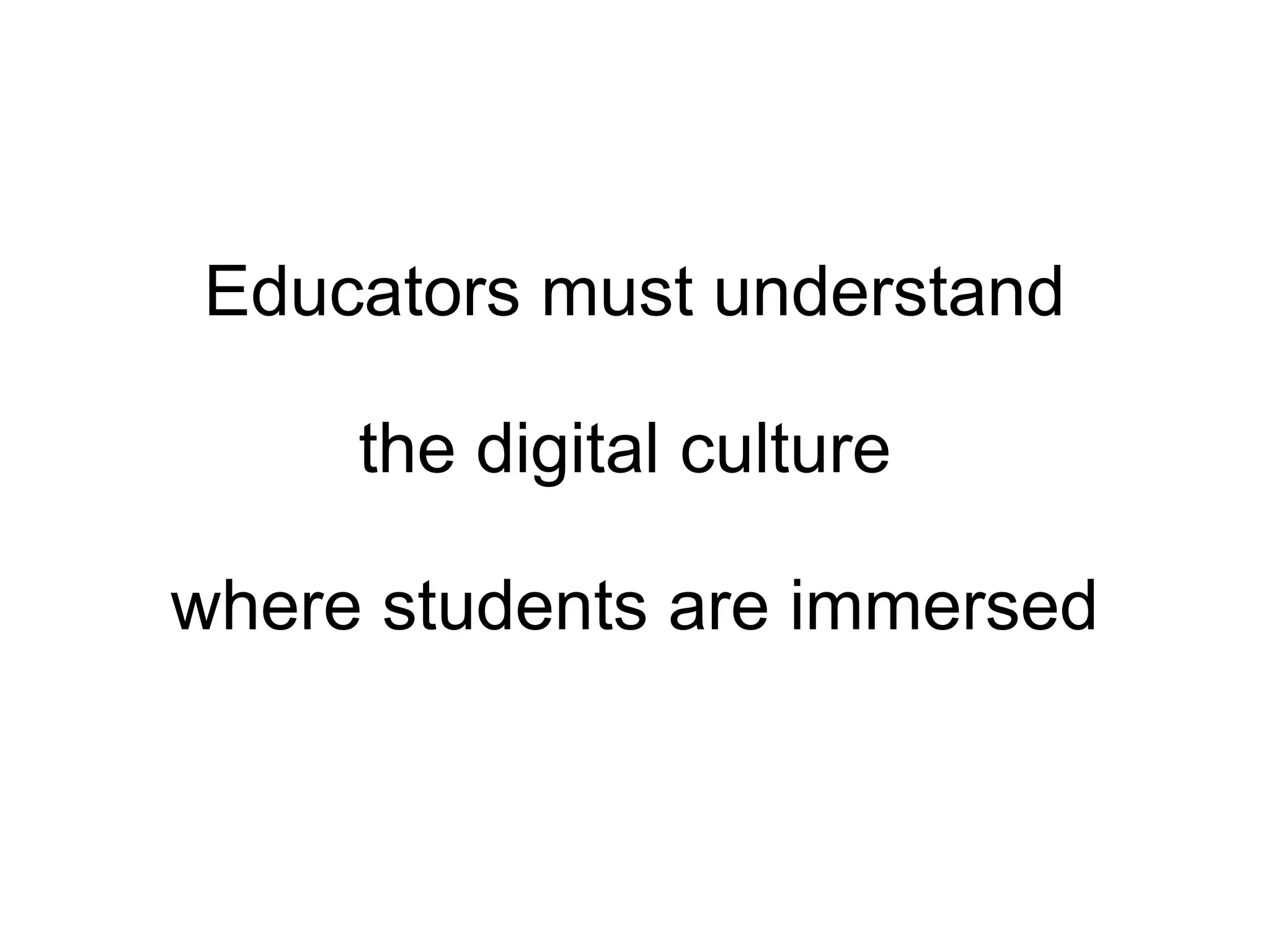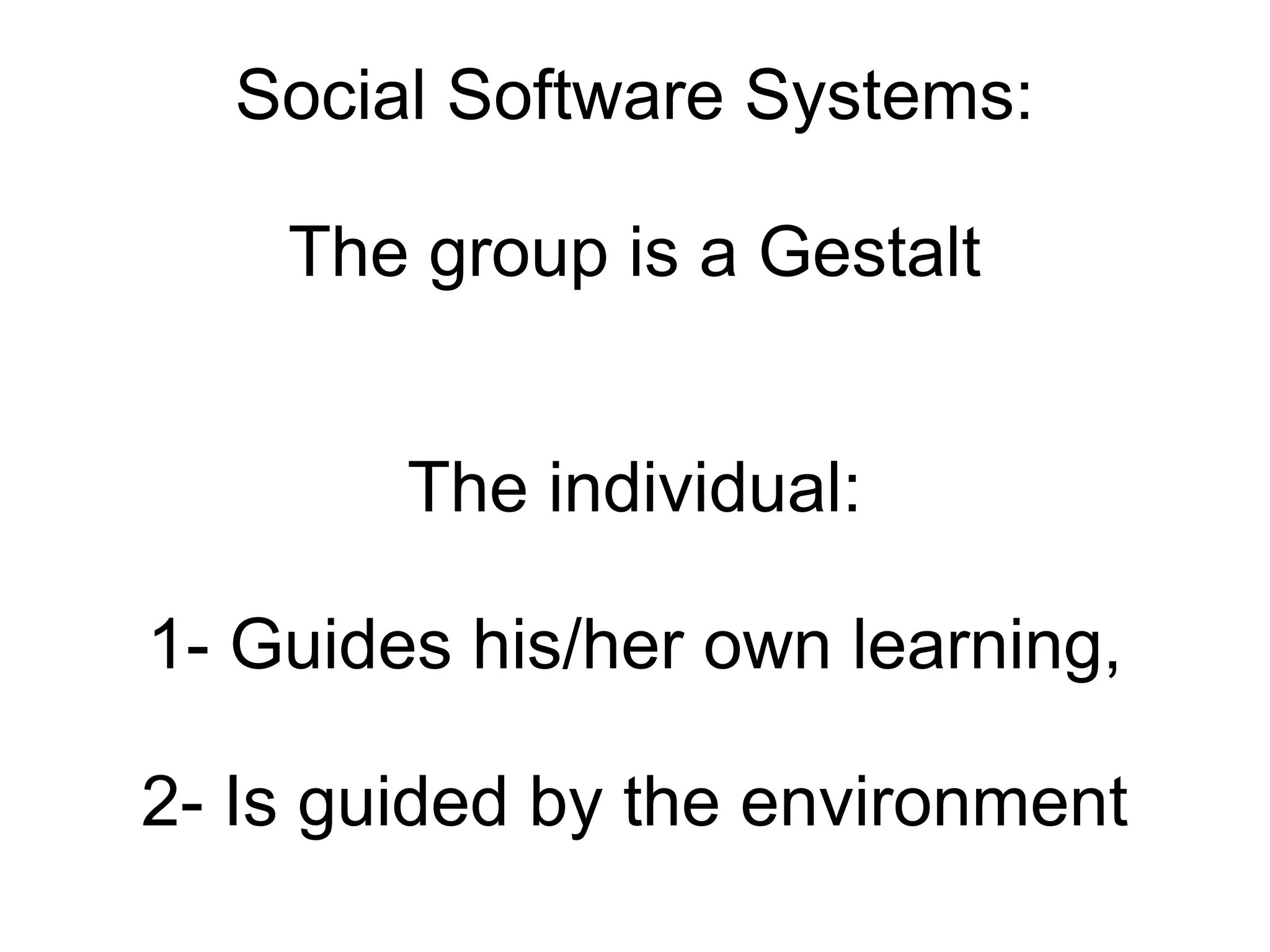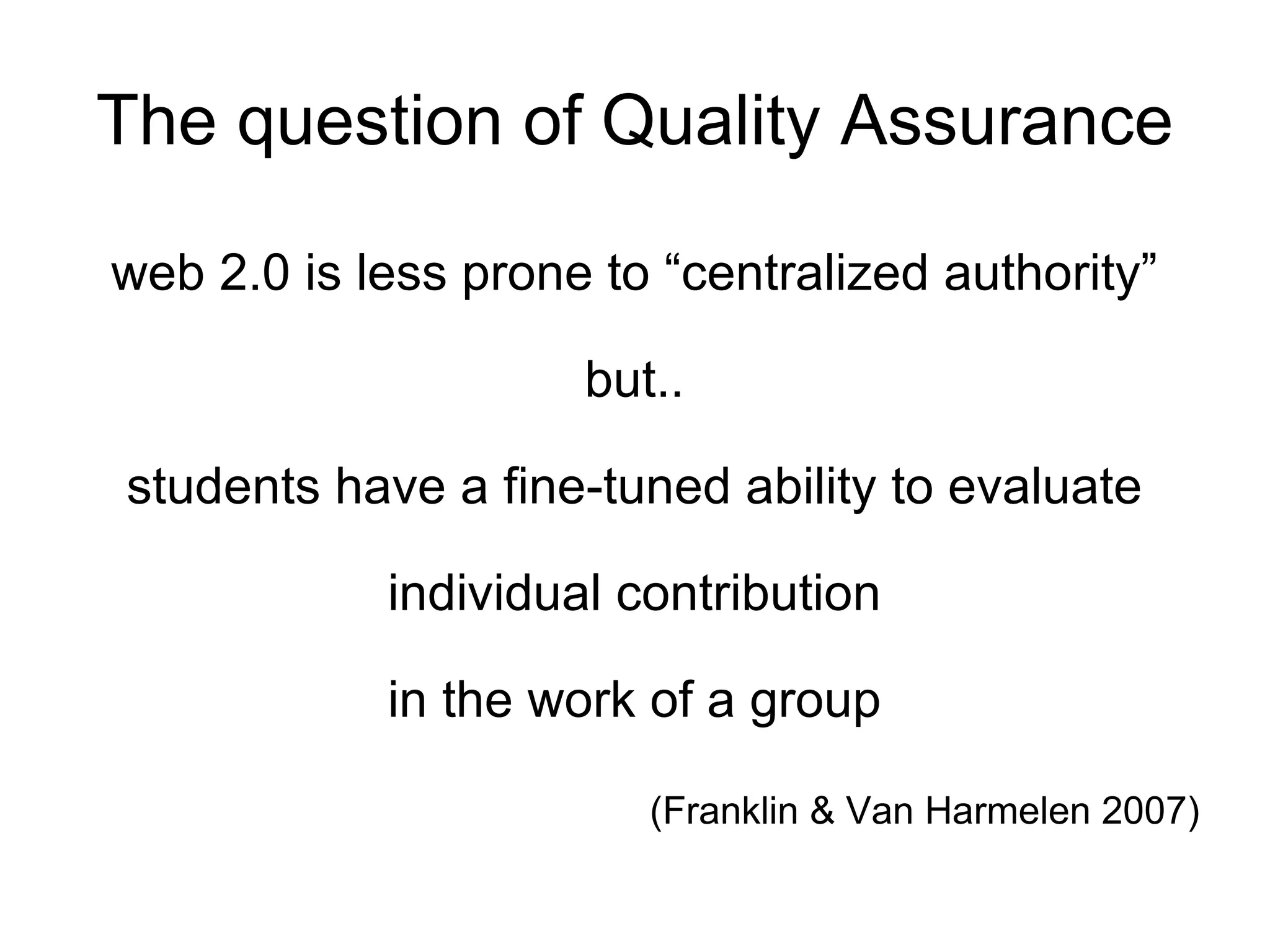This document discusses the use of Web 2.0 tools for teaching and learning. It notes that Web 2.0 allows for collaborative and networked interactions, changing the dynamics of the classroom. Studies have shown that Web 2.0 tools can promote new forms of inquiry, enhance collaborative learning, and develop needed competencies. However, teachers must understand students' digital culture and relinquish some control to incorporate these tools effectively into pedagogy.








